- Home
- Tours
- Cities
- Journal
- News
- Blog
- Why Choose us?
- Iran Travel Guidelines
- Iranian Calendar
- Yalda Night In Iran
- Iranian Food
- Iranian Train Railway
- Nomads
- Hijab in Iran
- Can I Drink Alcohol In Iran?
- 10 things tourists must know before traveling to Iran
- Clothing Guideline
- Fascinating Villages in Iran
- IRAN Intangible Cultural Heritage in UNESCO
- Services
- Contact us
- About Us
Iran Visa
Iran Visa Information
Traveling to Iran is a thrilling experience and a journey full of cultural wonders, ancient history, and unforgettable landscapes. However, before planning your trip, it is essential to obtain the correct Iran visa.
The most common type for travelers is the Iran tourist visa, which is typically valid for 45 days and can be extended for an additional 15 days. For those traveling for business or study, business visas and student visas are also available with longer validity, sometimes up to six months.
Applying for an Iran visa can vary depending on your nationality, the type of visa, and current diplomatic relations between Iran and your country. Generally, the process involves filling out an application form, submitting the required documents, and paying a visa fee.
Some travelers can complete the application themselves, while others may find it easier to apply through a travel agency. Before recent political events, travelers could apply for an Iran e-visa online through the official e-visa system. This allowed applicants to pay fees and receive their visa electronically via email.
However, this process was sometimes complicated and could carry a higher risk of rejection, especially for travelers from countries sensitive to the Iranian government. For a smoother experience, it is highly recommended to work with a trusted agency like Sinargasht Travel Agency.
Our team simplifies the entire visa process, making it fast, secure, and cost-effective. Simply fill out our online form, and we will handle the rest. Within a few working days, you will receive your Iran e-visa confirmation code, allowing you to focus on planning your trip.
Whether you are visiting the historic cities of Tehran, Shiraz, Isfahan, Yazd, or Persepolis, obtaining your visa with ease ensures that your journey to Iran will be memorable and stress-free. Choose Sinargasht Travel Agency for reliable assistance with your Iran tourist visa and experience the magic of Iran without complications.
Iran Visa Information
Sinargasht Travel Agency will support you to get an Iran tourist Visa as soon as possible and also provide free Iran visa services on your tour packages. Here is some general information about the Iranian visa and how to get it. The few valid agencies in Iran can apply for Iran Tourist Visa, so please notice the cases that required for visa issue.
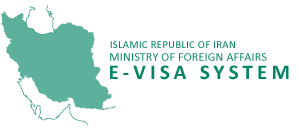
Iran Visa
All You Need to Know About the Iran Visa and Travel Safety,
Is Iran a Safe Destination for Travelers Right Now?
Many travelers often wonder about the safety of visiting Iran, especially after some European countries issued “red travel warnings” due to political tensions. These warnings are partly connected to diplomatic relations, the JCPOA developments, and past arrests of certain foreign nationals in Iran.
However, it is important to understand the context. Most of these arrests occurred due to travelers not adhering to Iranian laws or ignoring prior warnings. For instance, a recent case involved an Italian national who engaged in political activities on social media while in Iran—actions that go beyond the boundaries expected of tourists.
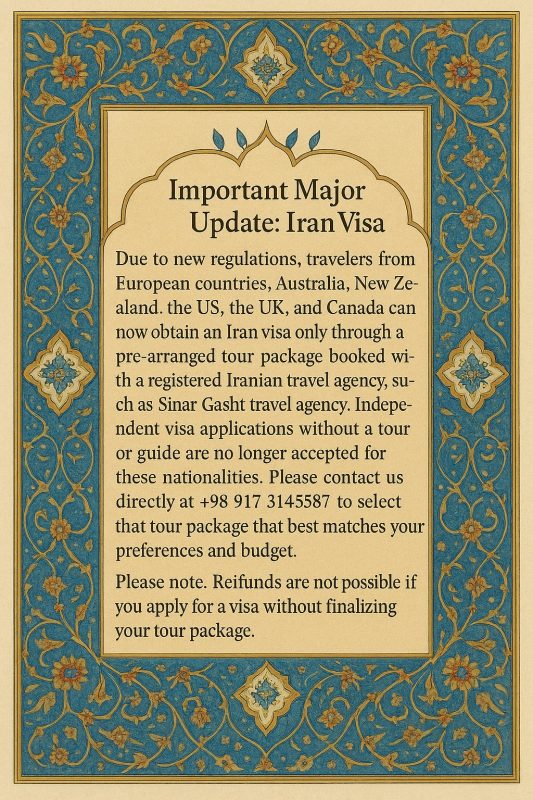
Iran Visa
Tips for a Safe Visit to Iran:
- Respect Local Laws: Always follow Iranian laws and cultural norms.
- Avoid Political Gatherings: Tourists should steer clear of protests or political demonstrations.
- Stay Updated: Follow reliable sources like Sinargasht Instagram for first-hand travel experiences and safety updates from other visitors.
By taking these precautions, travelers can enjoy a safe and unforgettable journey through Iran’s rich history, stunning architecture, and warm hospitality. For detailed information about applying for an Iran visa and the latest travel safety updates, explore our complete guide.
Who needs a visa to enter Iran?
Everyone needs a visa to enter Iran, except for the nationals of countries mentioned in the “Visa-Free Countries” section. You can complete your Iran Visa Application online and pick up your visa before or upon your arrival.
Which nationalities are eligible for visa-free travel to Iran?
Iran has introduced a flexible visa waiver policy for travelers from select countries. Here’s the latest list of visa-free nationalities based on 2024 regulations:
- 90 days. Turkey, Armenia, Syria (only by direct flights from Damascus), Oman
- 45 days. Georgia
- 30 days. Iraq
- 29 days. Lebanon
- 21 days. China (Iran Tourist Visa for Chinese), Hong Kong, Macao
- 20 days. Egypt
- 14 days. Azerbaijan, Kazakhstan
- 15 days. Malaysia (Iran visa for Malaysian)
- 15 days. (every 6 months, not extendable, only by air): India
- 15 days. (every 6 months, not extendable) Bahrain, Belarus, Bosnia and Herzegovina, Brazil, Brunei, Cambodia, Croatia, Cuba, Indonesia, Japan, Kuwait, Kyrgyzstan, Mauritania, Mauritius, Mexico, Peru, Qatar, Saudi Arabia, Serbia, Seychelles, Singapore, Tanzania, Tunisia, United Arab Emirates, Uzbekistan, Vietnam, Zimbabwe.
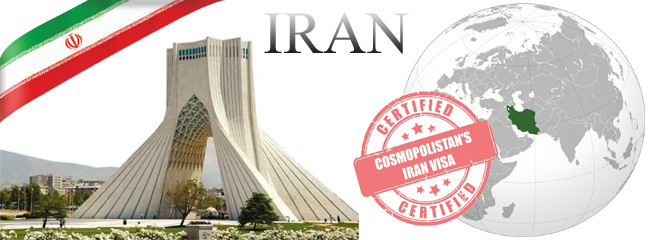
Iran Visa
Difference Between Applying for an Iran Visa via E-Visa (MFA Portal) and Sinargasht Travel Agency.
When planning your trip, you can apply for an Iran travel visa in two main ways:
- Iran E-Visa (MFA Portal)
The E-Visa portal, managed by Iran’s Ministry of Foreign Affairs (MFA), is the government’s official platform for visa applications. While it is the direct channel, many travelers have reported:
- Long processing times, especially after COVID-19.
- Higher rejection rates.
- Limited or no communication about application status.
-
Sinargasht Travel Agency (Authorized Visa Service
Sinargasht, a licensed travel agency in Iran, offers professional visa application services alongside its travel packages. Choosing this option provides:
- Faster processing – most approvals are issued within 2 weeks (excluding Thursdays & Fridays).
- Lower rejection risks – applications are checked and submitted correctly.
- Personalized support – step-by-step guidance to avoid errors.
- Trusted reputation – Sinargasht is ranked as one of the best travel agencies in Iran on TripAdvisor with excellent traveler feedback.
Conclusion
While the Iran E-Visa portal remains an official option, many travelers prefer to apply through Sinargasht Travel Agency for a more reliable, faster, and hassle-free process. If you want to minimize delays and increase your chance of approval, working with an experienced Iran visa Agency like Sinargasht is often the best choice.

How can you check your application status?
After submitting your Iran visa application and completing the payment, you’ll receive a tracking code. You can use this code to check your application status online. The review process usually takes 2 weeks (excluding Thursdays and Fridays). However, during national holidays or busy periods, it might take longer.
Which nationalities should apply for an Iran visa in advance?
Some nationalities face longer processing times or more complex visa approval steps. If you’re from one of the following countries, it’s recommended to apply for your Iran visa at least 2 to 3 months before your intended travel date.
Require Early Application (2+ months):
- United States
- United Kingdom
- Canada
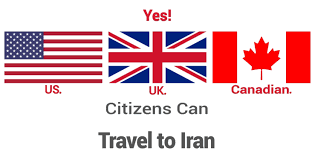
Iran visa
Face Complex Approval Process:
- Pakistan
- Sri Lanka
- Iraq
- Afghanistan
- Bangladesh
- Colombia
- Jordan
- Libya
- Nepal
- Somalia
- Tajikistan
- Yemen
If you’re from one of these countries and unsure about the next steps, our visa experts can guide you through a smoother application process.
What Is an Iran Visa Authorization Code (Visa Approval)?
After submitting your Iran visa application, and once it’s approved by the Ministry of Foreign Affairs (MFA), you’ll receive a PDF document called the Visa Authorization Code or Visa Grant Notice. This document confirms that your visa has been approved and that you’re eligible to collect it.
You must present this document at:
- An Iranian embassy or consulate (if you chose to pick up your visa there), or
- The Visa on Arrival (VOA) counter at one of Iran’s international airports (if you selected airport pickup).
Your Iran visa will then be officially handed to you without any stamp in your passport. For more information about tracking and collecting your visa, Contact our support team.
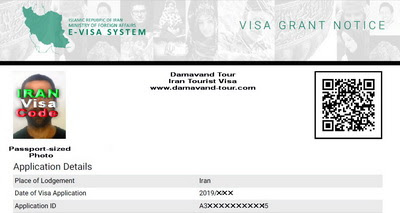
Iran Visa
Where Can You Collect Your Iran Visa? (Airports & Embassies)
After receiving your Iran visa authorization code, you must pick up your actual visa either at:
- One of Iran’s international airports or
- An Iranian embassy or consulate (if you selected embassy pickup).
You do not need to be a citizen of the country where the embassy is located—just make sure it’s the same embassy you selected in your application.
Major Iranian Airports to pickup your visa:
- Tehran – Imam Khomeini International Airport (IKA)
- Mashhad – Mashhad International Airport
- Isfahan – Isfahan International Airport
- Shiraz – Shiraz International Airport
- Kish Island – Kish International Airport
- Qeshm Island – Qeshm International Airport
- Tabriz – Tabriz International Airport
- Urmia – Urmia Airport
- Ahvaz – Ahvaz International Airport
- Kerman – Kerman Airport
- Lar – Larestan International Airport
- Bandar Abbas – Bandar Abbas International Airpor
- Bushehr – Bushehr International Airport
For a full list of embassies and consulates, visit this directory of Iranian embassies. Need help choosing the right visa pickup point? Contact our support team.
Iran Visa Rules for Dual Nationals: Which Passport Should You Use?
If you hold dual nationality, you can usually apply for your Iran visa using the passport that has:
- The lowest visa fee, 0
- The shortest processing time.
However, there are a few important exceptions:
- US, UK, and Canadian dual nationals: You can apply using your second passport (non-US/UK/Canada) to avoid the stricter tour and approval requirements, but you must inform us about your other nationality.
- If your father is Iranian: Regardless of your current nationality, you are considered an Iranian citizen. You must enter Iran using an Iranian passport, which must be obtained before arrival.
Hiding your Iranian heritage or second passport can lead to visa denial or problems at the airport. For personalized advice, contact our visa specialists.
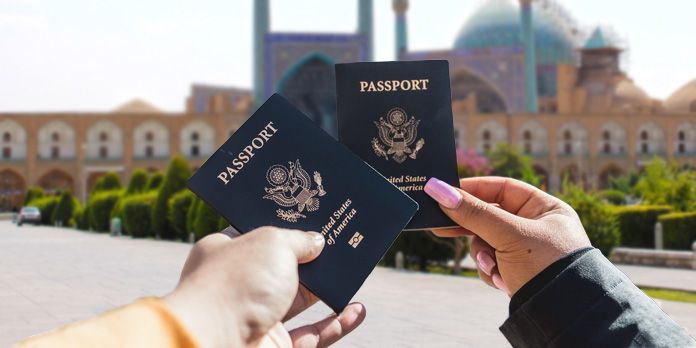
Iran Visa
Can I Visit Iran If I Have Been to Israel?
If you have visited Israel or have Israeli stamps in your passport, your Iran visa application may be rejected. Iranian authorities may deny entry to:
- Israeli passport holders, regardless of other nationalities.
- Travelers with Israeli entry/exit stamps in their passport.
- Travelers with Jordanian or Egyptian exit stamps from land crossings that imply they entered Israel.
How to Get an Iran Visa on Arrival (VOA) – What You Must Know.
Travelers from over 180 countries may be eligible to receive an Iran Visa on Arrival (VOA) at major international airports such as Tehran (IKA), Shiraz, Isfahan, Mashhad, and others.
To get a VOA, you must:
- Fly directly into Iran (land borders do not issue VOA)
- Present a valid passport (minimum 6 months validity)
- Show proof of travel insurance covering “Iran”
- Have your travel itinerary ready
- Pay the visa fee in cash (USD 50–150 in small banknotes)
Notice: To avoid risk and delays, we recommend you apply for your Iran visa online in advance and simply collect your visa at the airport counter with your Visa Grant Notice.

Iran Visa
Learn more about Iran Visa on Arrival including eligible countries and updated rules.
To enter Iran, most foreign nationals must obtain a valid visa in advance. The standard Iran tourist visa is a single-entry visa that allows for a stay of up to 30 days, with the possibility of extending it twice—bringing the total stay to a maximum of 90 days.
Your passport must be valid for at least six months beyond your intended date of departure from Iran. Citizens from select countries enjoy visa-free access to Iran for specific durations. For instance:
- Turkey and Armenia: 90 days
- Georgia: 45 days
- Malaysia, The United Arab Emirates, Uzbekistan, Japan, Brazil, Croatia, Indonesia, Serbia, and many more: 15 days
Travelers from the United States, the United Kingdom, and Canada must book their trip through an approved Iranian tour operator and be accompanied by a certified guide during their stay.
To simplify the application process, Sinargasht Travel Agency provides online visa services with a high success rate. For updated policies and to get help with your application, contact us via WhatsApp or email.
When Should I Apply for an Iran Visa?
The ideal time to apply for your Iran visa depends on your preferred visa collection method:
- Airport Visa Pick-Up: You can apply up to 3 months in advance of your trip. Once approved, you have 90 days to collect your visa on arrival at the airport.
- Embassy or Consulate Pick-Up: Apply up to 2 months in advance. You must collect your visa within 45 days of receiving your Visa Grant Notice.
However, for most travelers, we recommend applying around 6 weeks before arrival to ensure smooth processing while keeping your plans flexible.
For travelers from the US, UK, and Canada, the process is longer. You must apply at least 60 days before arrival and travel under an approved itinerary with a licensed tour guide. Sinargasht will assist in designing your customized itinerary and handling the paperwork for a smoother experience.
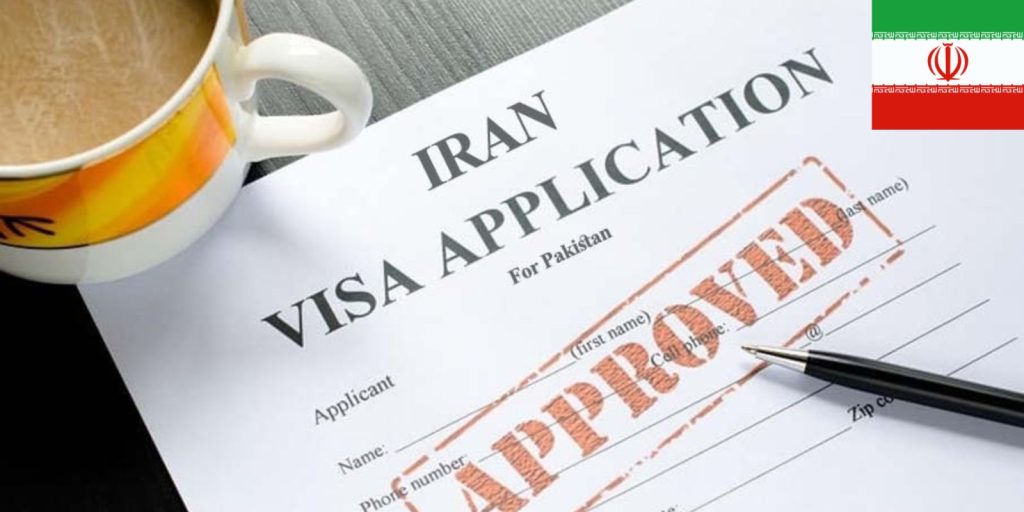
Iran Visa
Can I Get My Iran Tourist Visa for 2025 in Advance?
Yes, you can! With Sinargasht Travel Agency, travelers can apply for a 1–30 day Iran tourist visa up to 3 months in advance. Once your visa is approved, your next steps depend on your collection method:
- Airport Pick-Up: After receiving your Visa Grant Notice, you will have 90 days to enter Iran and collect your visa at your chosen airport. You can arrive on the last day of that period and still enjoy the full validity of your visa.
- Embassy Pick-Up: After your visa is approved, you have 60 days to collect it from your selected Iranian embassy or consulate. Once issued, you’ll have 45 days to enter Iran.
Apply for Your Iran Visa today — it’s fast, secure, and affordable.
What’s the Best Time to Apply for an Iranian Visa?
The earlier you apply, the better — especially if you’re a citizen of the US, UK, or Canada, as your visa process will require a 2–3 month lead time and must be arranged through a licensed Iranian travel agency with a fixed itinerary.
For all other nationalities, we recommend applying for your Iran visa around 6 weeks before arrival. This allows enough time to:
- Receive your visa authorization code (typically within 2 weeks)
- Choose your visa collection point (airport or embassy)
- Handle any documentation issues or last-minute changes
Avoid last-minute applications — they may delay or derail your travel plans.
What Are the Requirements to Apply for an Iran Visa?
To successfully apply for an Iran tourist visa, you must submit the following required documents. These are part of the standard Iran visa requirements for all nationalities:
- Complete Approximate Travel Itinerary: List each city, accommodation, and dates of stay. It’s acceptable if your plans change later — just update us.
- Travel Insurance: Must clearly show coverage for “Iran”. If your current policy doesn’t mention Iran, purchase Iran affordable insurance with full coverage here.
- Sinargasht Application Fee: Payable with your credit card upon submission. This is a separate fee from the visa fee paid at pickup.
- Completed Visa Form: Includes your personal details, travel plan, and host information (if applicable).
Additional document specifications include:
- Passport Copy Requirements – JPEG, in color, under 500 KB, 800×600 pixels (width greater than height). Must be sharp and unobstructed.
- Visa Photo Requirements – JPEG, in color, under 240 KB, 600×400 pixels (height greater than width), no glasses, white background, taken in the last 6 months.
Tip: Submitting accurate, complete, and correctly formatted files speeds up your approval. If unsure, contact Sinargasht for personalized support.
Iran Visa Application
The Iran visa application process is simple when you follow the correct steps and submit all required documents. You can apply online through the Iran MFA e-Visa Portal or use a trusted third-party service like Sinargasht Travel Agency to ensure faster processing, fewer rejections, and full guidance.
Required Documents:
- Valid passport (at least 6 months before expiration)
- Passport photo (600×400 pxl, JPEG, less than 240 KB, white background)
- Passport scan (JPEG, under 500 KB, 800×600 px, color)
- Completed visa form (including itinerary and contact details
- Travel insurance mentioning “Iran” explicitly in the policy
Once your visa application is approved, you will receive a Visa Grant Notice (Authorization Code). Depending on your pickup location, the validity of this code will vary:
- Airport Pick-Up: Visa code is valid for 90 days. You must enter Iran within this window.
- Embassy Pick-Up: You have 60 days to collect your visa at the embassy, and once issued, 45 days to enter the country.
Note: Citizens of the US, UK, and Canada must travel with a certified guide and are required to join a pre-approved tour. Processing takes 40–60 working days for these nationalities.
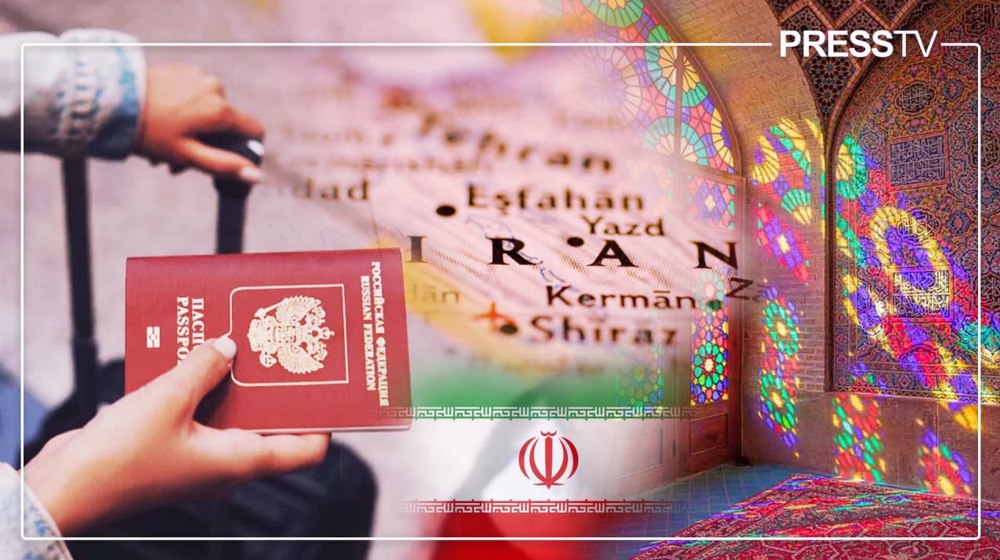
Iran Visa
Iran Visa Photo Size:
When submitting your Iran visa application, your photo must meet specific requirements set by the Iranian Ministry of Foreign Affairs. A mismatched or incorrect photo is one of the most common reasons for delays or rejection. Follow the exact specifications below to avoid problems.
Official Photo Requirements:
- Dimensions: 600 x 400 pixels
- Format: JPEG only
- File Size: Less than 240 KB
- Background: White, clear, and uniform
- Position: Face directly forward (not angled), no glasses, no hats
- Recency: Taken within the last 6 months
Tip: Avoid scanned photos from your passport. Submit a clear digital file that adheres to the exact dimensions and quality required.
For visual guidance, download the Iran Visa Photo Specs PDF.
Should I Have Travel Insurance for Iran?
Yes, having valid travel insurance that specifically covers Iran is mandatory for all foreign travelers entering the country. You may be asked to present your policy at the border or airport upon arrival.
Why Is Iran Travel Insurance Required?
- Most international insurance providers do not include Iran in their standard coverage due to sanctions.
- Even when Iran is included, claim processing is often slow or insufficient in emergencies.
- Border agents may reject entry if the policy doesn’t explicitly mention coverage for Iran.
Pro Tip:
If you pick up your visa from Iran’s embassy/consulate, you have to purchase the mandatory travel insurance upon receiving your visa at the embassy/consulate.
How Long Is the Duration of an Iran Tourist Visa?
The standard Iran tourist visa is issued for an initial period of up to 30 days. However, you may extend your visa twice while inside Iran, with each extension allowing for an additional 30 days.
The maximum stay allowed on a tourist visa is 90 days in total. The duration of your visa depends on your submitted travel itinerary. Iranian authorities typically grant visas based on the number of days you plan to stay and the cities listed in your itinerary.
How to Extend Iran Visa (Tourist Visa)?
Locate the Passport Immigration Police or the Police Department of Aliens Affairs (also known as “Edareh Gozarnameh”) in the city you want to extend. You will need 2-3 passport photos, 2 copies of your passport, your current Visa Authorization Code, any previous extensions, 2 copies of your visa extension form, and about $10 in Iranian Rials for the extension and form/printing fees (Photocopiers can usually be found in each location). Apply a few days before your visa expiration.
How to Enter Iran Without a Visa – Visa-Free Entry to Kish & Qeshm Islands?
If you’re looking for a short trip to Iran without applying for a visa, the islands of Kish and Qeshm offer visa-free entry for up to 14 days for most nationalities. These Persian Gulf islands are free trade zones and welcome international tourists with fewer formalities. Key guidelines:
- Confirmed hotel reservation is required.
- Visa-free entry only valid when entering directly by air.
- US, UK, and Canadian citizens must have a “certified guide” waiting at the airport. It’s mandatory to notify Iranian authorities and organize the visit in advance.
To ensure a smooth arrival, contact Sinargasht at least 10 days in advance for assistance.
Iran Visa Free Countries (Iran Visa Waiver Policy)
Iran offers visa-free travel to citizens of several countries, making it easier for many travelers to explore the country without prior visa arrangements. Under the current Iran visa waiver program, nationals from specific countries can visit Iran for tourism without needing a visa, depending on the bilateral agreements and length of stay allowed. Iran’s visa-free policy includes several countries, each allowing a specific duration of stay:
- 90 days. Turkey, Armenia, Syria (only by direct flights from Damascus), Oman
- 45 days. Georgia
- 30 days. Iraq
- 29 days. Lebanon
- 21 days. China, Hong Kong, Macao
- 20 days. Egypt
- 14 days. Azerbaijan, Kazakhstan
- 15 days. Malaysia
- 15 days. (every 6 months, not extendable, only by air) Republic of India
- 15 days. (every 6 months, not extendable) The United Arab Emirates, Kingdom of Bahrain, Kingdom of Saudi Arabia, State of Qatar, State of Kuwait, Republic of Uzbekistan, Kyrgyz Republic, Republic of Tunisia, Islamic Republic of Mauritania, United Republic of Tanzania, Republic of Zimbabwe, Republic of Mauritius, Republic of Seychelles, Republic of Indonesia, Brunei Darussalam, Japan, Republic of Singapore, Kingdom of Cambodia, Socialist Republic of Vietnam, Federative Republic of Brazil, Republic of Peru, Republic of Cuba, United Mexican States, Bosnia and Herzegovina, Republic of Serbia, Republic of Croatia, Republic of Belarus.
Iran Visa for US Citizens:
Travelers from the United States must follow special procedures when applying for an Iran visa for American citizens. All US nationals must apply at least 60 days in advance and book their trip through an authorized Iranian tour operator like Sinargasht. Independent travel is not allowed and American citizens must travel with a licensed tour guide from arrival to departure.
Note that visa processing time for US citizens is typically 40–60 business days. Express processing is available at select embassies for an additional fee, but approval from the MFA is still mandatory. Despite the stricter entry requirements, US passport holders can travel to Kish and Qeshm Islands visa-free for up to 14 days. However, they must coordinate in advance with a certified tour guide who will meet them upon arrival at the island airport.
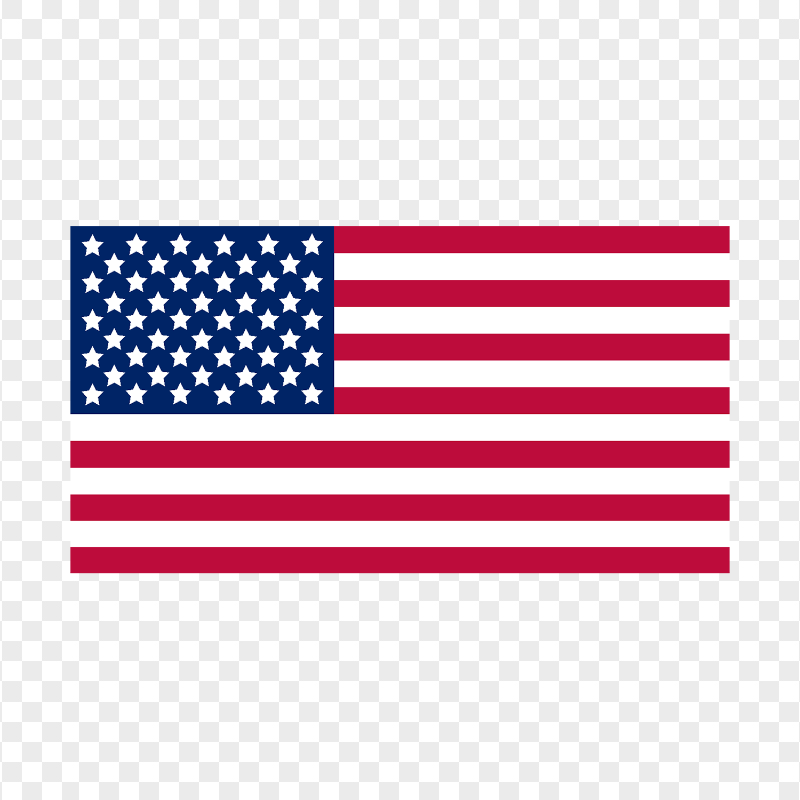
Iran Visa for British Citizens
Like US travelers, British passport holders applying for a visa for Iran from the UK must receive approval from the Ministry of Foreign Affairs and join a guided tour. Expedited processing is available at the Iranian embassy in the UK for an additional cost. UK passport holders can also enjoy visa-free entry to Kish and Qeshm Islands for up to 14 days. However, like US citizens, they must have a certified Iranian guide waiting at the airport and must inform Iranian officials at least 3 days in advance of their travel plans.
Iran Visa for Canadian Citizens
Canadian passport holders must apply for an Iran tourist visa at least 2 months before arrival. Similar to UK and US nationals, Canadians must obtain prior approval from the Iranian Ministry of Foreign Affairs (MFA) and can only travel as part of a private or group tour organized by a licensed Iranian tour operator, such as Sinargasht. Canadian travelers also have access to express visa processing at Iranian embassies, though this requires paying an additional fee and does not bypass MFA approval. Citizens of Canada may visit Kish and Qeshm Islands without a visa for up to 14 days. This visa-free entry is limited to air arrivals only, and travelers must notify Iranian authorities at least 3 days in advance. A licensed Iranian guide must meet them upon arrival.
Can my Iran visa get rejected?
Yes, Iran visa applications can be rejected for several reasons, including incomplete documentation, inconsistent travel information, or errors in your itinerary. Even minor issues—like an incorrectly formatted photo or unclear accommodation details—can result in rejection.
Most Common Reasons for Rejection
- Providing inaccurate or vague answers in the application form
- Missing or poorly formatted passport photo or passport scan
- Frequent prior visits to Iran without clear justification
- Attempting to stay with local hosts without official hotel reservations
- Submitting a travel itinerary that lacks detail or appears unrealistic
To minimize your chances of rejection, apply through an experienced agency like Sinargasht. Our experts review every application before submission, ensuring all requirements are met and helping you avoid costly mistakes.
Can I get a multi-entry Iran visa?
No, Iran does not currently issue multiple-entry tourist visas. All tourist visas are valid for a single entry only. This means that once you leave the country, your visa expires and you must apply for a new one to re-enter. Business Visa & Student Visa are the only visa types that offer multiple entries.
If you’re planning to travel in and out of Iran as a tourist (e.g., visiting a neighboring country and returning), be aware that you’ll need to apply for a new tourist visa each time.
What is Iran e-Visa or Iran visa online?
The Iran e-Visa is the official digital visa system operated by the Iranian Ministry of Foreign Affairs (MFA). It allows travelers to apply for their visa online by submitting their documents and travel details through the MFA portal. Once the application is reviewed and approved, travelers receive a Visa Grant Notice or Visa Authorization Code, which they can use to collect their visa at an embassy, consulate, or on arrival (for eligible nationalities). Although the e-Visa system streamlines the process, approval is not guaranteed. Rejections and delays occur most of the times due to missing documents, incorrect photo/passport formats, or insufficient travel details.
Applicants can also track their application status through the MFA portal. For higher chances of approval, it is strongly recommended to apply through a reputable visa agency. Apply now for your Iran e-Visa with full support and faster processing through Sinargasht Travel Agency.
Iran e-Visa vs. Visa Reference Number
Many travelers confuse the Iran e-Visa with the Visa Reference Number, but they serve different purposes in the visa process.
The Iran e-Visa refers to the online application system. Through this system, applicants submit their personal information, travel itinerary, and digital documents like passport copy and photo. This submission is reviewed by the Iranian Ministry of Foreign Affairs (MFA). Once your application is approved, the MFA issues a Visa Reference Number (also known as the Visa Grant Notice). This document confirms that your visa has been authorized and can now be collected. You will need this number to pick up your visa either at an embassy/consulate or upon arrival at designated airports in Iran. While the e-Visa is a digital application platform, the Visa Reference Number is the result of a successful application, allowing you to receive your actual visa document.
Whether you collect your visa at the airport or from an embassy, always carry your Visa Reference Number and all supporting documents with you to avoid delays.
Iran Visa Stamp: What You Need to Know:
After your Iran visa is approved, you must collect your official visa before entering the country. This applies whether you’re picking it up at an Iranian embassy, consulate, or airport. If you applied online through the Iran e-Visa system or Sinargasht, you’ll receive a Visa Grant Notice or Visa Authorization Code. Present this document, along with your passport to receive your visa.
Iran no longer stamps passports. Since late 2018, in response to US sanctions, all visas are issued as separate paper documents. This means your passport will remain stamp-free during your visit. You must keep the printed visa document with you throughout your stay.
Travelers eligible for Visa on Arrival (VOA) will receive this paper visa at major international airports, such as Tehran (IKA), Shiraz, Isfahan, Tabriz, and Mashhad. Always ensure you have your documents printed and ready to avoid delays.
Iran Visa Status (Iran Visa Check):
After submitting your Iran visa application, you can check your visa status online through the Iranian MFA e-Visa portal. Use your application ID and passport number to access your file. Your status may show as pending, approved, or rejected. If you’re unsure what a status means or experience delays, contact the Sinargasht team for support via WhatsApp. They can help track and follow up on your application directly with the authorities.
Iran Visa Tracking:
Once you’ve applied for your Iran visa, you can track its progress through the Sinargasht online tracking page. Just enter your tracking code, which is emailed to you after submitting the application, to access your file.
This system helps you check for updates like approval, rejection, or requests for more documents. If you face technical issues or delays, Sinargasht team is available to follow up with the authorities and ensure your visa process stays on track.
Duration, Extension, and Validity of Iranian Tourist Visa
The Iranian tourist visa is typically issued for 30 days, allowing visitors to stay in Iran within this period. However, travelers can apply for a visa extension twice, each time for an additional 30 days, giving a maximum stay of 90 days. Extensions must be requested at the Immigration & Passport Police (also called Edareh Gozarnameh) in major cities like Tehran, Isfahan, Shiraz, and Yazd.
Your visa’s validity period—the time you have to enter Iran after the visa is issued—depends on where you chose to collect it:
- Airport Collection: You have 90 days from visa approval to enter Iran and pick up your visa at the airport. You’ll still get the full duration of your visa even if you arrive on the last day of this window.
- Embassy Collection: You have 60 days to collect your visa from the selected embassy. Once issued, your visa is valid for 45 days, and you must enter Iran within that period.
Iran visa policy:
Iran’s visa policy outlines the different visa types, required documents, and entry rules based on your nationality. Most travelers need a visa to enter, but Iran offers several pathways including tourist, business, pilgrimage, student, and medical visas. There are also provisions for visa-free access and visa on arrival (VOA) for specific countries.
For details about whether you’re eligible for visa-free entry, can use VOA, or need to apply in advance, see the full policy here: Iran Visa Policy.
Coming to Iran with a camper, car or bike:
If you’re entering Iran by land with a private vehicle, you must prepare your carnet de passage before arrival. Although it’s possible to obtain it at the border, doing so is much more expensive and can delay your entry. To apply for your visa, you must share a general itinerary in advance, including where you expect to camp each night. This applies whether you’re staying in your camper, car, or a tent. It’s not the exact plan and can be modified during your trip with a notice to us.
Important note for diesel vehicles: You’ll need to ask Iranian truck drivers to share a portion of their diesel ration. For gasoline vehicles, fuel is available much better, and you can ask station attendants for help.
Land vs. Airport Entry
Visa on Arrival (VOA) is only issued at Iranian airports. If you’re planning to collect your visa upon arrival, you must enter Iran by air. Land border crossings do not offer VOA services. This means that travelers entering overland must obtain their visa in advance through an embassy or consulate using a valid visa authorization code.
International airports offering Visa on Arrival (updated list): The following airports across Iran issue tourist visas on arrival for eligible nationalities. Make sure you have your visa grant notice or authorization code printed before your flight:
- Tehran – Imam Khomeini International Airport (IKA)
- Mashhad – Mashhad International Airport
- Isfahan – Isfahan International Airport
- Shiraz – Shiraz International Airport
- Tabriz – Tabriz International Airport
- Kerman – Kerman Airport
- Ahvaz – Ahvaz International Airport
- Urmia – Urmia Airport
- Lar – Larestan International Airport
- Bandar Abbas – Bandar Abbas International Airport
- Kish Island – Kish International Airport (visa-free for up to 14 days for most nationalities)
- Qeshm Island – Qeshm International Airport (visa-free for up to 14 days for most nationalities)
Land border entry: Get your visa in advance. If you’re entering Iran by land—whether from Turkey, Armenia, Iraq, Pakistan, or another neighboring country—you must apply for your visa ahead of time. During the visa application process, you should select an embassy or consulate for pickup. Once approved, you’ll receive a visa authorization code that you must present when collecting your visa.
Popular embassies and consulates for overland travelers in the neighboring countries:
- Turkey: Istanbul, Ankara, Erzurum, Trabzon
- Armenia: Yerevan, Kapan
- Georgia: Tbilisi
- Iraq: Baghdad, Erbil, Sulaymaniyah, Basrah
- Pakistan: Islamabad, Lahore, Quetta, Peshawar, Karachi
Important note: You cannot cross into Iran by land without a valid visa already issued. Attempting to do so without the appropriate documentation will result in denial of entry at the border.
Contact Info
tel: +98-7132320455
cell:+98-9173145587
fax: +98-7132321219Email: [email protected]
no 18, 1st floor, Hadi shopping center, Serah Bargh, Ghasro-Dasht Ave, Shiraz. Iran
Open All the Time.Newsletter
